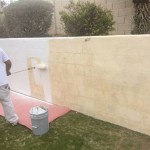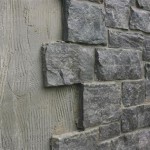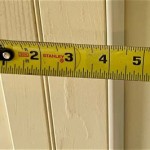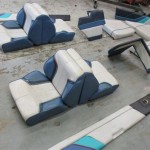Mold and Mildew Removal for Leather Car Interiors
Mold and mildew growth in a vehicle's leather interior is a common problem, particularly in humid climates or areas prone to leaks. These fungal growths not only present an unsightly appearance but can also emit unpleasant odors and pose potential health risks. Addressing mold and mildew promptly and effectively is crucial for maintaining the aesthetic appeal, hygiene, and value of the vehicle.
This article provides a comprehensive guide to understanding mold and mildew in leather car interiors, identifying the signs of infestation, outlining preventative measures, and detailing effective removal techniques. The information presented is intended to equip vehicle owners with the knowledge necessary to manage these issues and maintain a healthy and clean driving environment.
Understanding Mold and Mildew
Mold and mildew are types of fungi that thrive in damp, dark, and poorly ventilated environments. They reproduce through spores, which are microscopic particles that float in the air. When these spores land on a suitable surface with sufficient moisture and organic material (such as leather, fabric, or dust), they can germinate and grow into visible colonies.
Several factors contribute to mold and mildew growth in vehicles. Leaks in the roof, windows, or undercarriage can introduce moisture into the interior. Spilled drinks, food crumbs, and tracked-in mud can provide nutrients for fungal growth. Poor ventilation, exacerbated by parking the vehicle in shaded areas or leaving windows closed, further promotes the formation of a favorable environment for mold and mildew.
Distinguishing between mold and mildew can be challenging, as the terms are often used interchangeably. Generally, mildew refers to surface-level fungal growth that appears as a powdery or fuzzy coating, typically white or gray. Mold, on the other hand, often penetrates deeper into the material, presenting as dark, stained patches that can be black, green, or brown. While both can be problematic, mold is generally considered more difficult to remove and potentially more harmful to health.
Exposure to mold and mildew can trigger allergic reactions in sensitive individuals, leading to symptoms such as sneezing, coughing, runny nose, skin rashes, and eye irritation. In individuals with pre-existing respiratory conditions like asthma, exposure can exacerbate symptoms and potentially lead to more serious health issues. Therefore, prompt removal and preventative measures are crucial for maintaining a healthy environment within the vehicle.
Identifying Mold and Mildew Infestation
Early detection of mold and mildew is crucial in preventing extensive damage and minimizing potential health risks. Regularly inspecting the vehicle's interior, particularly in areas prone to moisture accumulation, can help identify infestations in their initial stages.
Visible signs of mold and mildew include discolored patches, ranging from white or gray to black, green, or brown, on the leather surfaces. The texture may appear powdery, fuzzy, or slimy. In severe cases, the growth may extend to other interior components like carpets, upholstery, and headliners.
An unmistakable musty or earthy odor is another telltale sign of mold or mildew growth. This odor is often more pronounced when the vehicle has been closed for an extended period, allowing the fungal growth to proliferate in a confined space.
Areas to pay particular attention to during inspection include: floor mats, under the seats, inside the glove compartment, around door seals, and along the edges of windows. These are locations where moisture tends to accumulate, creating favorable conditions for fungal growth.
If any of these signs are present, it is essential to take immediate action to remove the mold and mildew and address the underlying cause of the moisture problem. Delaying treatment can lead to more extensive damage to the vehicle's interior and potentially pose health risks.
Preventative Measures
Preventing mold and mildew growth is always preferable to dealing with an existing infestation. Implementing proactive measures can significantly reduce the risk of fungal growth and maintain a clean and healthy interior environment.
Addressing leaks promptly is crucial. Regularly inspect the vehicle for any signs of water intrusion, such as damp carpets, water stains on the headliner, or condensation on the windows. Repair any leaks in the roof, windows, or undercarriage immediately to prevent moisture from entering the interior.
Proper ventilation is essential for preventing moisture buildup. When parking the vehicle, especially in humid conditions, leave the windows slightly open to allow for air circulation. Avoid parking in shaded areas, which can trap moisture and promote fungal growth. Regularly use the air conditioning or dehumidifier to remove excess humidity from the interior.
Maintaining a clean interior can also minimize the risk of mold and mildew. Regularly vacuum the carpets, upholstery, and leather surfaces to remove food crumbs, dust, and other organic matter that can serve as nutrients for fungal growth. Promptly clean up any spills to prevent moisture from seeping into the interior components.
Consider using moisture-absorbing products, such as silica gel packets or dehumidifying crystals, to help control humidity levels inside the vehicle. These products can be particularly useful in areas prone to high humidity or during periods of prolonged storage.
Regularly conditioning the leather can help prevent it from becoming dry and cracked. Dry leather is more susceptible to absorbing moisture, creating a favorable environment for mold and mildew growth. Use a high-quality leather conditioner to keep the leather supple and resistant to moisture.
Mold and Mildew Removal Techniques
If mold and mildew have already established themselves in the vehicle's leather interior, prompt and effective removal is necessary. Several techniques can be employed, ranging from simple household remedies to specialized cleaning products, depending on the severity of the infestation.
Begin by thoroughly vacuuming the affected areas to remove loose mold spores and debris. Use a vacuum cleaner with a HEPA filter to prevent the spores from being dispersed back into the air. Dispose of the vacuum bag or empty the canister immediately after use.
For mild mildew growth, a solution of white vinegar and water can be effective. Mix equal parts white vinegar and water in a spray bottle. Lightly spray the affected areas with the solution and allow it to sit for 10-15 minutes. Wipe the area clean with a damp cloth and then dry thoroughly with a clean towel. The acidic nature of vinegar helps to kill mildew and neutralize odors.
For more stubborn mold stains, a solution of baking soda and water can be used. Create a paste by mixing baking soda with enough water to form a thick consistency. Apply the paste to the affected areas and allow it to dry completely. Once dry, vacuum away the baking soda residue. Baking soda is a natural deodorizer and can help to absorb moisture and kill mold.
Commercial mold and mildew removers specifically designed for leather are also available. These products typically contain stronger chemicals and should be used with caution, following the manufacturer's instructions carefully. Always test the product on a small, inconspicuous area first to ensure it does not damage or discolor the leather.
When using any cleaning solution, avoid saturating the leather. Excess moisture can seep into the material and promote further mold growth. Apply the solution sparingly and wipe away any excess liquid immediately.
After cleaning, thoroughly dry the affected areas with a clean towel. Consider using a hair dryer on a low setting to expedite the drying process. Ensure that the vehicle is well-ventilated during and after the cleaning process to allow moisture to evaporate.
For severe infestations or if the mold and mildew have penetrated deep into the leather, professional cleaning services may be necessary. Professional detailers have specialized equipment and cleaning products to effectively remove mold and mildew without damaging the leather.
After removing the mold and mildew, it is essential to address the underlying cause of the moisture problem. This may involve repairing leaks, improving ventilation, or using dehumidifying products. Failure to address the underlying cause will likely result in a recurrence of the problem.
Wearing protective gear, such as gloves and a mask, is recommended when handling mold and mildew. This will help to prevent skin irritation and minimize the risk of inhaling mold spores.
Proper disposal of contaminated materials is essential to prevent the spread of mold spores. Dispose of vacuum bags, cleaning cloths, and any other materials that have come into contact with mold in a sealed plastic bag.

How To Remove Car Interior Mold Auto Detail Doctor

Rnemite Amo Deals Colorless And Odorless Leather Cleaner For Car Interiors Furniture Boots Bags Etc Suitable Natural Synthetic Artificial 30ml Com

Universal Leather Care Mold Removal Gel Strong Mildew Temu

Universal Leather Care Mold Removal Gel Strong Mildew Temu

How To Remove Car Interior Mold Auto Detail Doctor

Chamoist Mold And Mildew Remover Bathroom Cleaner Leather Car Interior Instrument Panel Seat Cleaning Stain Removal Refurbishment Agent 60ml Com

Pin By Connie Eller On Cleaning Tips Leather Car Seats Mold Remover Carpet

Universal Leather Care Mold Removal Gel Strong Mildew Temu

Chamoist Mold And Mildew Remover Bathroom Cleaner Leather Car Interior Instrument Panel Seat Cleaning Stain Removal Refurbishment Agent 60ml Com

Car Interior Cleaner Mold Remover Upholstery Seats Foot Mats Headliner Removal Cleaning And Maintenance Spray Com
Related Posts








